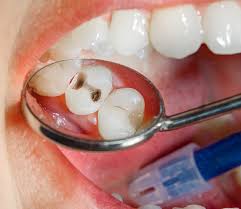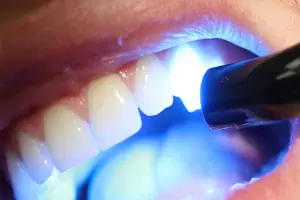Many patients assume that if their tooth isn’t causing pain, a filling isn’t necessary. However, waiting until discomfort occurs often means the problem has worsened, leading to more complex and expensive treatments, such as crowns or bridges. Regular dental check-ups are essential for catching issues early before they require more invasive procedures.
Cavities develop when acid-producing bacteria gradually erode the tooth’s enamel, progressing deeper into the tooth over time. Dental fillings help restore the damaged areas and prevent further decay. Fillings come in different materials, and your dentist will recommend the best option based on your specific needs.
Types of Dental Fillings
Composite Fillings:
Composite fillings are a popular choice, especially for patients concerned about aesthetics. These tooth-colored fillings are made from a blend of plastic and glass, providing a natural appearance that blends seamlessly with the surrounding teeth. One of the advantages of composite fillings is that they require less removal of the tooth structure compared to traditional amalgam fillings, leading to a more conservative restoration.
Many patients opt for composite fillings due to their aesthetic appeal and concerns about mercury in metal-based fillings. At Turkish Dentist, we ensure your composite fillings are skillfully crafted to match the shade of your teeth, offering a natural, attractive result.
The Dental Filling Procedure
Here’s a step-by-step overview of how composite fillings are placed:
Tooth Isolation:
Your dentist will isolate the tooth to prevent moisture from affecting the filling process.
Decay Removal:
The decayed portion of the tooth is removed using a dental drill or air abrasion, leaving a clean space for the filling.
Layering the Composite:
The composite resin is applied in layers to fill the cavity.
Curing the Composite:
Each layer of composite resin is hardened using a special curing light, solidifying the material.
Shaping the Filling:
Once the filling is fully hardened, your dentist will carefully shape and polish it to match the natural contours of your tooth, ensuring it looks and functions like a real tooth.


